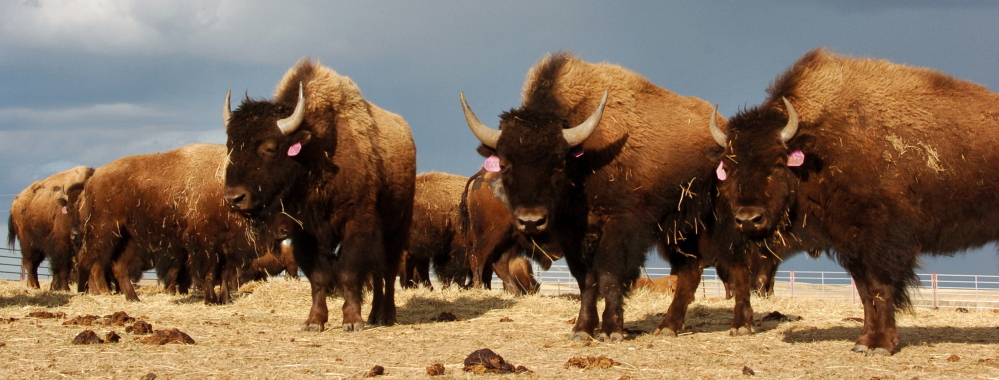BILLINGS, Mont. — Federal officials said Monday that 20 parcels of public lands in 10 states could be suitable for bison from Yellowstone National Park, although it’s likely to be years before any animals are relocated to the sites.
The locations include areas as diverse as Arizona’s Grand Canyon National Park, an Iowa wildlife refuge and a North Dakota national historic site.
They were identified in a long-awaited Department of Interior report that looked at using Yellowstone’s bison herds to further the restoration of a species that once ranged most of the continent.
Tens of millions of bison occupied North America before overhunting nearly drove them extinct by the late 19th century.
Yellowstone was one of the last holdouts for the animals in the wild, and had roughly 4,600 bison at last count. During their winter migrations, the animals periodically spill into neighboring Montana, triggering large-scale bison slaughters to prevent the spread of the animal disease brucellosis.
A pilot bison relocation program in Montana has struggled to overcome opposition from ranchers. They worry both about the disease and the possibility of bison competing with cattle for grazing space.
The pilot program quarantined Yellowstone bison for several years before they could be moved, to protect against disease transmissions. Even so, many within the livestock industry remain wary and most of the animals in the program have not yet been relocated.
Those animals are in control of Montana Fish, Wildlife and Parks, which is considering proposals from tribes, government agencies and private groups that want to take the bison. If the park service were to revive the quarantine program and make it permanent, federal officials said it could be five years to a decade before more animals were relocated.
“If we were to do this, where would you place these bison? This report gives us a head-start on that question,” said Jorge Silva-Banuelos, an official with the U.S. Department of the Interior.
That could help relieve population pressures that led to the slaughter of thousands of migrating Yellowstone bison during the last decade, under an agreement between Montana and federal officials.
Conservation groups welcomed Monday’s report. But the National Wildlife Federation said it did not include enough collaboration with American Indian tribes interested in getting Yellowstone bison.
Yellowstone’s chief scientist, Dave Hallac, said planning for a bison quarantine program is expected to begin in late summer or early fall. Public input will be part of that process.
“Within a five-year period there may be the possibility of moving some brucellosis-free bison,” Hallac said.
The states and locations identified Monday as potentially suitable for relocated bison were:
• Arizona: Grand Canyon National Park
• Colorado: Baca National Wildlife Refuge, Great Sand Dunes National Park and Preserve
• Iowa: Neal Smith National Wildlife Refuge
• Kansas: Tallgrass Prairie National Preserve
• Montana: Charles M. Russell National Wildlife Refuge, National Bison Range
• Nebraska: Agate Fossil Beds National Monument, Fort Niobrara National Wildlife Refuge, Scotts Bluff National Monument, Valentine National Wildlife Refuge
• North Dakota: Knife River Indian Villages National Historic Site, Sullys Hill National Game Preserve, Theodore Roosevelt National Park
• Oklahoma: Chickasaw National Recreation Area, Wichita Mountains National Wildlife Refuge
• South Dakota: Badlands National Park, Wind Cave National Park
• Utah: Book Cliffs, Henry Mountains
Copy the Story LinkSend questions/comments to the editors.



Success. Please wait for the page to reload. If the page does not reload within 5 seconds, please refresh the page.
Enter your email and password to access comments.
Hi, to comment on stories you must . This profile is in addition to your subscription and website login.
Already have a commenting profile? .
Invalid username/password.
Please check your email to confirm and complete your registration.
Only subscribers are eligible to post comments. Please subscribe or login first for digital access. Here’s why.
Use the form below to reset your password. When you've submitted your account email, we will send an email with a reset code.